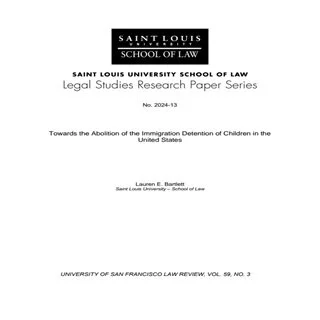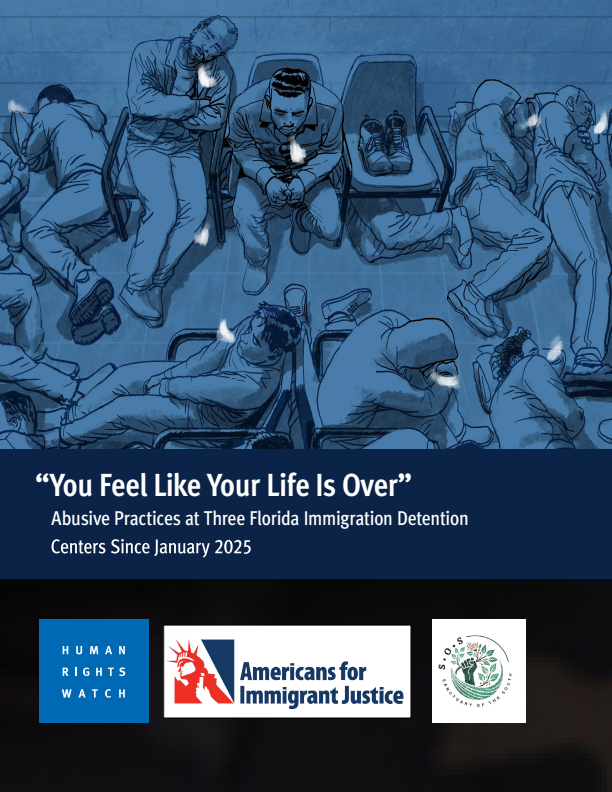By Sridhar, S., Digidiki, V., Kunichoff D., Bhabha, J., Sullivan, M., Gartland, MG.,
Between 2017 and 2021, more than 650,000 children were taken into custody at the border, with more than 220,000 of these children being detained for more than 72 hours (Flagg & Preston, 2022). International norms clearly assert that detention is never in the best interest of the child and should be used only as a measure of last resort and for the shortest possible period of time (UN General Assembly, CRC, Article 6, 2005). The rights of children in US immigration enforcement have been affirmed in a series of landmark cases resulting in the Flores Settlement Agreement, which acknowledges the unsuitability of child detention as immigration policy, and states that children should not be detained for more than 20 days (Schrag, 2020). Despite this guidance, the US continued to detain children for lengthy and arbitrary periods of time, placing them in detention facilities unsuitable for child health and safety. Furthermore, reporting and oversight from governmental and nongovernmental agencies have documented devastatingly harmful conditions for children in family immigration detention including separation from parents, the use of prison facilities inappropriate for housing children, and limited access to qualified medical professionals leading to grave physical and mental health consequences (U.S. ICE Advisory Committee, 2016; Allen & McPherson, 2023; Women’s Refugee Commission 2014; Human Rights First, 2022). Medical studies have documented long-term consequences of detention on children in the US and around the world (MacLean, et al, 2019; Zwi, et al 2018; Tosif, et al, 2023; Kronick, Rousseau, Cleveland, 2015); however, to our knowledge there are no systematic studies describing the quality of pediatric health care based on primary medical documentation within the US family immigration detention system. In collaboration with the Refugee and Immigrant Center for Education and Legal Services (RAICES), the Child Health Immigration Research Team based out of the Massachusetts General Hospital (MGH) Asylum Clinic at the MGH Center for Global Health and the FXB Center for Health and Human Rights at Harvard University, analyzed the medical records of 165 children, between 6 months and 18 years old, detained at Karnes County Family Residential Center (KCFRC) between June 2018 and October 2020. Medical records were collected with the permission of parents by the Refugee and Immigrant Center for Education and Legal Services (RAICES) Family Detention Team to investigate the provision of medical care for detained children, and analyzed in a de-identified form by the Child Health Immigration Research Team. Broadly, we found that existing health issues and care needs relating to physical and mental health were under-identified due to poor screening and minimal documentation of medical care, resulting in fragmentated and inadequate medical care. During prolonged detention the children in the study had limited access to basic healthcare, including key screenings and management of acute medical and mental health issues. KEY FINDINGS 1. The median length of detention was 43 days and 88 percent of children remained in detention for longer than 20 days, in violation of the terms of the Flores Settlement Agreement. 2. A total of 12 languages were documented, among them Haitian Creole, K’iche and Romanian. There was minimal documentation of interpreter use. 3. 4.3 percent of children exhibited moderate or severe wasting, 11.7 percent of children were “at risk of malnutrition,” 22.6 percent exhibited stunting, and 5.5 percent severe stunting. Despite this evidence, none of the children’s medical records documented the risk of malnutrition, nor was there any indication that measures were taken to enhance the children’s diet. 4. Although heights and weights of all children were obtained, there was no analysis or identification of nutritional status by the medical providers in the detention center based on the collected data. 5. The screening tool used to identify mental health needs did not follow a validated tool and did not consider the age of the child. Only 1% of the cohort was identified as at risk for a mental health disorder; a gross underestimation based on existing data. 6. There appeared to be a preponderance of providers practicing outside of their scope. There was a lack of pediatric-specific medical knowledge, evident in many medical records and inadequate documentation of medical reasoning. 7. There was inadequate follow up identified in the documentation of children with chronic illness and a poorly outlined referral process for children after leaving detention. 8. Though 100 percent of the children were screened for tuberculosis upon arrival, they were all screened with the use of chest x-ray, contrary to the 2020 ICE’s Family Residential Standards (FRS) and Center for Disease Control (CDC) guidance. Children with chest x-ray findings suggesting latent tuberculosis were not referred for further testing. 9. Vaccination data was often not recorded or was illegible if recorded, making it difficult to assess influenza vaccination. Furthermore, there was little influenza testing identified in children with fevers, which is concerning for underidentification of a highly contagious condition. 10. There was an overall inadequacy of the documentation of clinical reasoning which can lead to inadequate care in a fragmented health system, such as that in a detention facility. Conclusions Our study documents the mental and physical harm experienced by children in immigration detention at Karnes County Family Residential Center during prolonged detention relating to inadequate and inappropriate medical care. Our findings spanned a broad range of areas including the documentation of interpreter use, supervision, documentation, and delivery of acute medical care, assessment of nutritional and vaccination status, screening protocols for mental distress, and the identification of chronic medical conditions. The evidence of this study supports a conclusion that has been asserted by numerous civil society and medical organizations including the American Academy of Pediatrics (Linton, Griffin and Shapiro, 2017): there is no humane way to detain children and no version of family detention that is acceptable. While data in this study are drawn from only one US family immigration detention center and the sample size is limited, this report presents compelling evidence to support calls to end the practice of detaining children and families. Recognizing the decades long history of family detention in the US and the likelihood based on current policy discussion that the detention of children will occur into the foreseeable future, the report includes policy recommendations on the standard of medical care needed to meet the basic human rights of children in detention. These recommendations are anchored in ICE guidelines for medical treatment, the Family Residential Standards, as well as national and global medical organizations, such as the American Academy of Pediatrics, Centers for Disease Control and the World Health Organization. They are also supported by the clinical experience of those caring for child migrants, which are rooted in existing international law and practice. The key actions set out in this report are applicable to all venues for detention or custody of children within the immigration system. It should be noted that these recommendations do not negate the only reasonable conclusion based on our findings, that the detention of migrant children is harmful in any form and must be abolished.
Cambridge, MA: Harvard Global Health Institute, 2024. 64p.






















